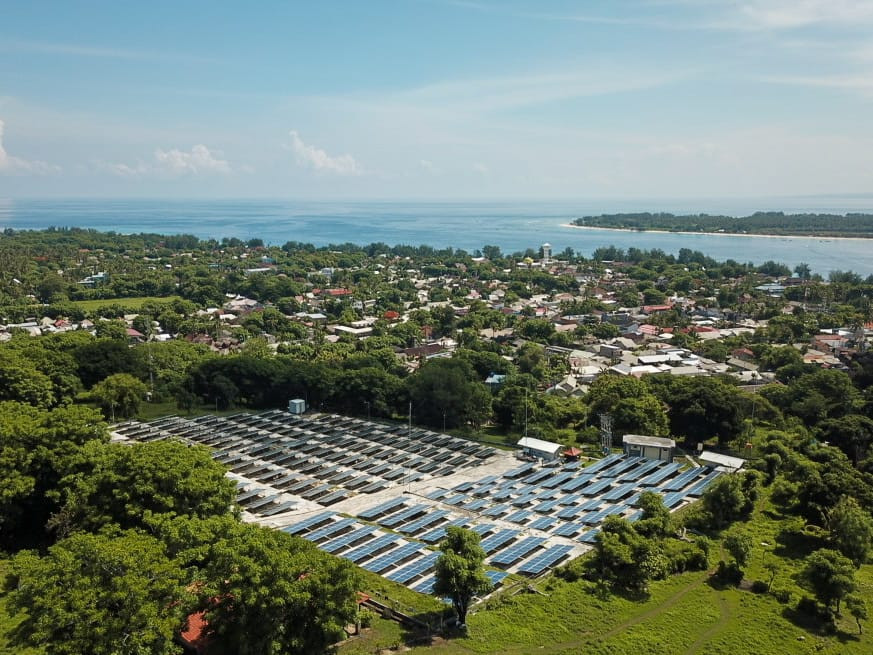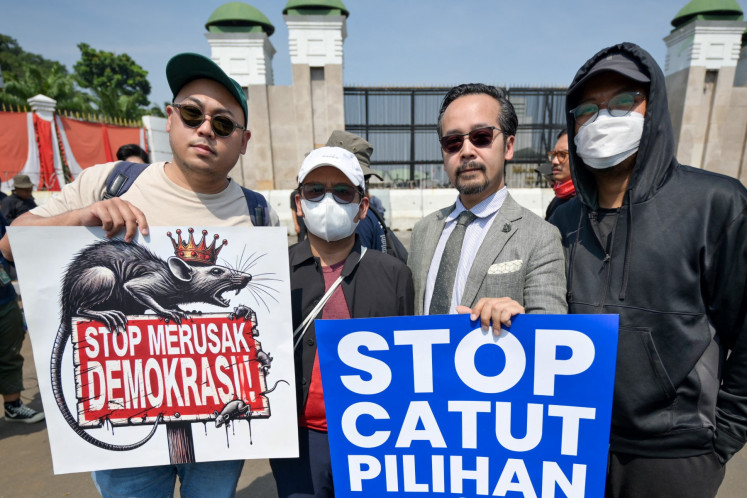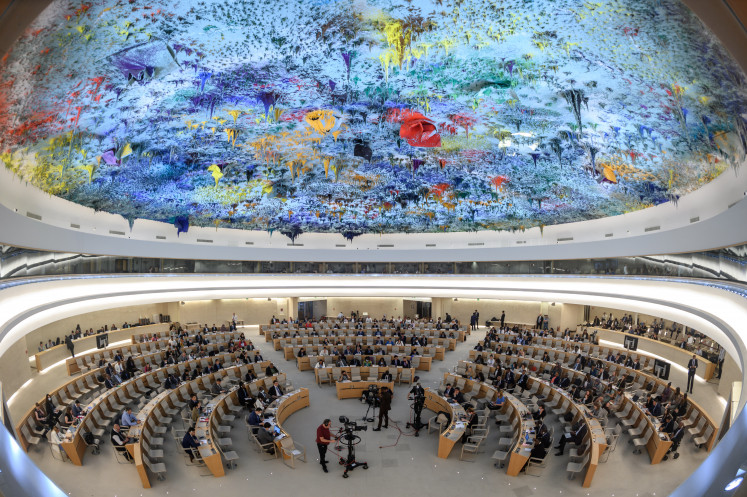Popular Reads
Top Results
Can't find what you're looking for?
View all search resultsPopular Reads
Top Results
Can't find what you're looking for?
View all search resultsThe (im)possible quest of making Indonesia a solar powerhouse
As renewable energy generation in Indonesia is lagging behind due to a lack of political will, a weak supportive regulatory framework and incentives; and also market barriers and doubts on grid and human resource readiness.
Change text size
Gift Premium Articles
to Anyone
S
olar energy is the prime mover for renewable energy development globally. Its growth has surpassed other forms of renewable energy and fossil fuel generation. Since 1990, the International Energy Agency (IEA) recorded that solar energy grew at an average annual rate of 37 percent, surpassing other renewables.
A recent IEA report confirms that solar energy is now the cheapest energy in the world. It projected the annual capacity of solar energy will grow from 100 gigawatts (GW) in 2019 to 220 GW in 2040. The higher demand is driven by the drop of the solar cell price, now 80 percent lower than in 2009, and an increasing trend in performance and efficiency.
The Energy and Mineral Resources Ministry has estimated Indonesian solar power potential at 207 gigawatt-peak (GWp). The Institute for Essential Services Reform’s (IESR) calculation on only the nation’s residential buildings yielded an even higher number, 655 GWp. Ground-mounted solar energy has the potential of 1,000 GW. News media often calls this potential “untapped”. So much potential, so little utilization. As of mid-2020, cumulative installation of solar energy in Indonesia had yet to reach 200 megawatt-peak (MWp).
It is not solely on solar energy, as renewable energy generation in Indonesia is lagging behind due to a lack of political will, a weak supportive regulatory framework and incentives; and also market barriers and doubts on grid and human resource readiness. Indonesia’s renewable energy landscape is called a “frontier market” for a reason: It carries risks and, as such, is considered unattractive in terms of investment.
Apart from the government budget, an additional annual US$3 billion to $5 billion investment is required to meet the renewable energy target of 23 percent by 2025. Solar energy is the obvious answer: It is modular and hence can be installed at any scale, it is easy to deploy and many locations in Indonesia, if not all, receive a fair amount of solar irradiation.
The government’s National Energy Planning (KEN) also requires government buildings and luxury houses to use a minimum 30 percent and 20 percent of their roof area for solar installation, respectively. Yet, it comes back to reinforcement and financial constraints.
In all fairness, the government has made efforts to promote rooftop solar development by issuing several regulations and support for the One Million Rooftop Solar Initiative from residential and commercial and industry consumers is growing, with some notes. In 2017, only 268 consumers of state electricity company PLN were using rooftop solar grids. The number has increased to more than 2,300.
Based on market surveys conducted in Greater Jakarta and Surabaya, financing support or government incentives and higher electricity savings (> 50 percent) for residential solar installation are largely preferred. A better net-metering rate of at least 1:1 should be considered to spur growth, as should other forms of support, such as discounts in taxes (including the land and building tax) and a low-interest installment financing scheme.
The appetite for solar energy is present at the sub-national level too. In response to Jakarta being one of the cities with the worst air pollution levels, its governor issued a regulation on air pollution control, which incorporates a plan to install rooftop solar grids at every public school in Jakarta by 2022. Bali’s governor has signed regulations on clean energy and electric vehicles, a proactive move to meet Bali’s sustainable development vision. Late last year, the governor of Central Java declared a “solar revolution” – with the intention to be the very first solar province in Indonesia. From 2020 onward, the Central Java administration plans to install more rooftop solar grids on government buildings, public facilities and SMEs. This wave of progressive action is a good example of localizing energy transition, and we expect more local administrations to follow.
In terms of post-COVID-19 economic recovery, The Jakarta Post reported June 19 that the Energy Ministry was working on a $1 billion solar program. This will act as a green economic recovery strategy and create a snowball effect: supporting the domestic solar industry, creating solar employment and eventually reaching the “magic number” – the gigawatt order of solar energy.
Not surprisingly, even without counting large-scale solar energy, Indonesia can enter the solar gigawatt club by focusing on rooftop solar deployment. Bonus point: By issuing proper policies to promote public adoption of rooftop solar energy, the government and utilities could save their own dimes.
Now, if we talk about utility scale solar energy, the story is different. Indonesia’s solar investment unattractiveness is mainly driven by project bankability, stemming from, among many other reasons, fossil fuel-tied electricity pricing, land acquisition issues, unbalanced risk allocation and unreasonable local content requirements.
The landscape needs to change to propel utility scale solar development. An effective pricing policy could be the key, favoring solar and other renewables particularly at the early stage of development, and this should be designed carefully to reflect economically sound payment levels.
Vietnam has benefited greatly from supportive pricing policy (i.e. feed-in-tariff [FiT]). Its solar capacity grew from only 0.1 GW to 5.4 GW in a mere two years. With that note, Indonesia’s coming presidential regulation on a renewable tariff and the procurement of renewables is expected to bring more investment with an attractive FiT and more government support.
To bring down costs and to obtain the best technology, proper procurement methods are also important. Reverse auction is one clear option; successfully implemented in many countries, this has helped renewables and particularly solar energy reach record-low prices. Just last August, a 700-MW solar auction in Portugal attracted a bidding price as low as US 1.3 cents per kilowatt-hour (kWh) – currently the lowest in the world.
Other forms of support for boosting solar energy growth include land provisions (or cheaply rented land), fiscal and financial incentives and stimulus for research and development activities.
***
Fabby Tumiwa is the executive director of the Institute for Essential Services Reform (IESR) and vice chairman of Indonesia Solar Energy Association. Marlistya Citraningrum is the program manager for sustainable energy access at IESR.










